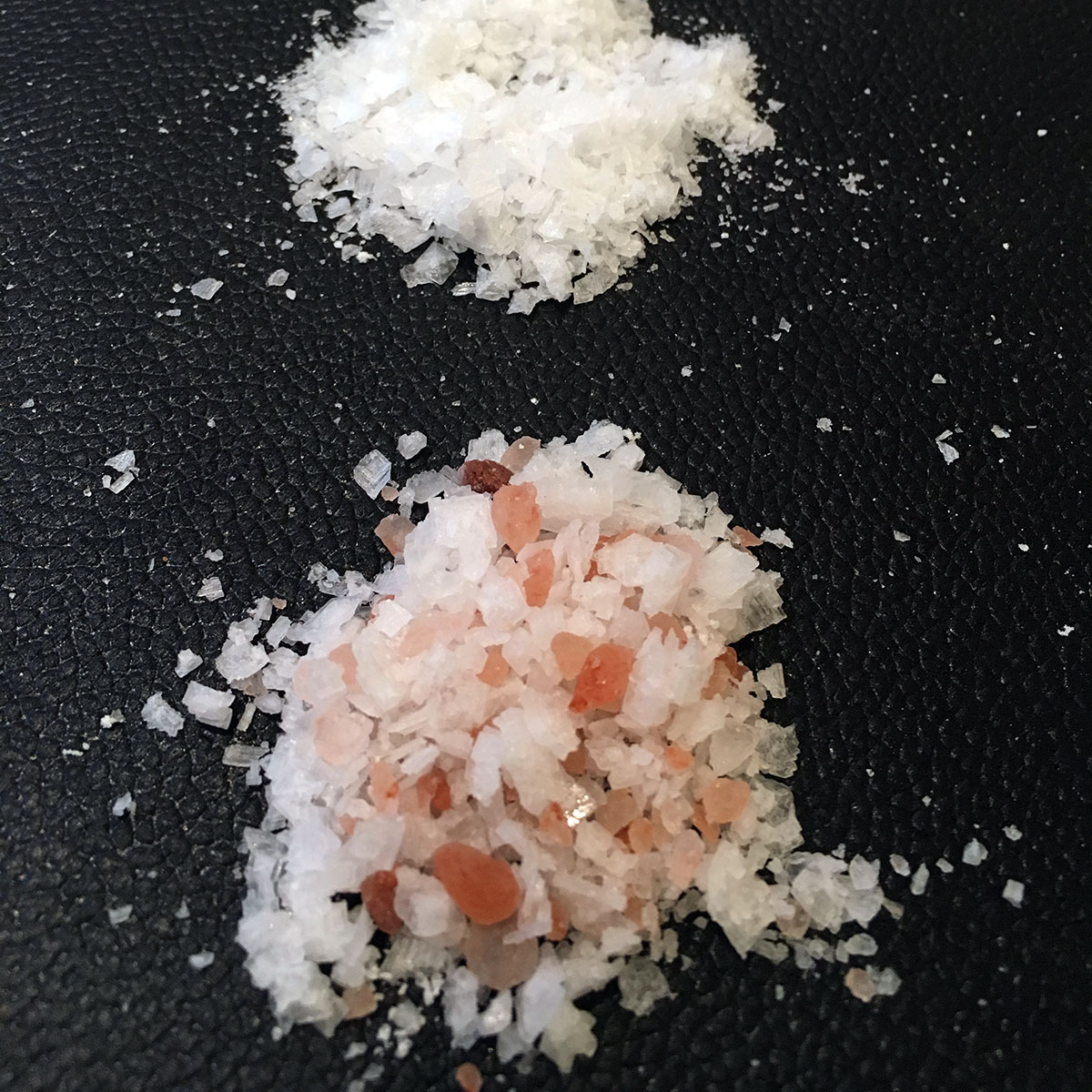
Salt contains sodium, a mineral we need in small quantities to regulate blood pressure, support nerve function and for muscles to contract and relax. Sodium can be found in most foods from dairy to celery so we can get enough sodium from our diet without adding salt to our food. However, the main source of sodium in our diet is salt added to foods while cooking and/or at the table. In the UK, the average salt intake is 8.2g/day (1) which is nearly 40% higher than the recommended amount of 6g/day.
Too much sodium in the diet may lead to water retention and high blood pressure which in turn increases the risk of heart disease and stroke. Diets high in salt can increases calcium excretion and may increase the risk of kidney stones (2) Too much sodium can deplete potassium which is necessary for heart functioning and it plays an important role in the contraction and relaxation of smooth and skeletal muscles that affect digestion and muscular function.
The NHS recommends (1) a maximum of 6g per day for adults – that is approx a teaspoon of salt/day. Although that might seem like a lot, you’ll be surprised to learn that some foods contain between 1/2 and 1 tsp per serving (See below). Also, the more salt we consume, the more we get “hooked” on the savoury taste and need to add more salt to our food.
Bear in mind that for children the NHS recommendations (1) are lower:
Salt is 40% sodium – whether it is table salt, refined sea salt, sea salt or pink Himalyan salt. The more unrefined the more minerals other than sodium the salt will contain BUT in minute amounts, so when buying salt, go or flavour rather than nutrients. Refined salt may also contain additives and anti-caking agents. Smoked fish and meat: smoked salmon contains approximately 2g of salt (1/3 tsp) per 100gCured meats: salami contains more than 4g salt per 100g Cheese is also quite high in salt with 100g of cheddar providing 1.5g of salt or 1/4 of a tsp. Canned foods: baked beans contain 1g salt per 100g and more than 1/2 tsp salt per 1/2 can Some bottled/canned pasta sauces. Fast foods: a McDonald’s double cheese burger contains 2.5g salt and a portion of fries 0.62g so all together, 1/2 tsp salt. Take away foods contain large amounts of salt (and in some cases monosodium glutamate which is also a source of sodium!) with a bowl of Wagamama chicken ramen reaching 6g (1 whole teaspoon) of salt. Pizza: the amount of salt varies depending on toppings but it ranges from 3.5g to a whopping 7.5g – that’s 1.5g more than your daily allowance Soy sauce and other condiments including stock cubes can be quite salty too, so use in moderation and if possibly, choose a low-salt version. Bread is also an important source of salt with typically about 1g per 100g – that’s 2 slices. A cheese and ham or smoked salmon sandwich can reach 3g salt very easily without taking into account any spreads or dressings! Ready to eat soup including miso Cookies and other baked goods also contain some salt from baking soda and baking powder. Salty nuts and snacks like pretzels and crisps.
The easiest way is to avoid (or reduce!) foods really high in salt. However, you can still enjoy a cheese sandwich, perhaps just make sure you don’t have it the same day you order a takeaway.
Sodium and potassium contract each other so diets high in potassium reduce levels of sodium and have a positive impact on blood pressure (3). Foods high in potassium include most fruits and vegetables: potatoes and sweet potatoes, squash, beans, spinach, avocado, papaya, etc. Bananas do contain some potassium but not as much as in vegetables and they are rather high in sugar.
(1) NHS Choices (2015) How much salt is good for me? Last accessed online on 23/01/2017 at http://www.nhs.uk/chq/pages/1138.aspx?CategoryID=51
(2) Safe Upper Levels for Vitamins and Minerals (2003) Expert Group on Vitamins and Minerals Food Standards Agency Last accessed online on 23/01/2017 at https://cot.food.gov.uk/sites/default/files/cot/vitmin2003.pdf
(3) Aburto NJ Hanson S Gutierrez H Hooper L Elliott P Cappuccino FP (2013) Effect of increased potassium intake on cardiovascular risk factors and disease: systematic review and meta-analyses BMJ 346:1378